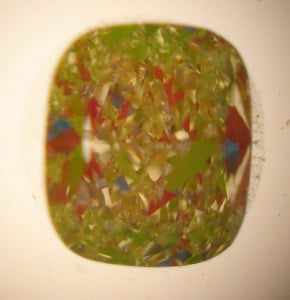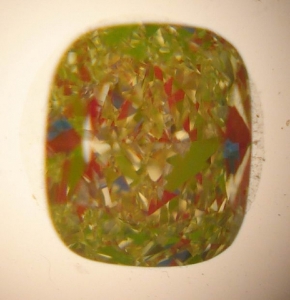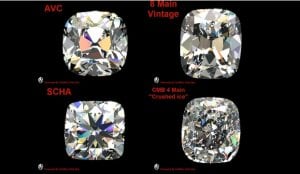- Joined
- Aug 15, 2000
- Messages
- 19,099
David it is much simpler.
The stones in the lower right have opposing pavilion main facets (across the short axis) and when you look in through the table the ray goes out through the table back and hits you in the head (BAM).
The stone on the upper right does not have opposing pavilion mains, so this style of cutting stops that (and creates smaller virtual facets = more crushed ice).
For the 1,000th time, take a piece of copy paper, poke a pen sized peep hole in the center, and you will see the bowtie goes away when you peek at the marquise pear or oval. Cut the paper smaller and smaller until your head begins to appear and (not being bright) the bow tie will appear and get worse as the paper gets smaller.
The stones in the lower right have opposing pavilion main facets (across the short axis) and when you look in through the table the ray goes out through the table back and hits you in the head (BAM).
The stone on the upper right does not have opposing pavilion mains, so this style of cutting stops that (and creates smaller virtual facets = more crushed ice).
For the 1,000th time, take a piece of copy paper, poke a pen sized peep hole in the center, and you will see the bowtie goes away when you peek at the marquise pear or oval. Cut the paper smaller and smaller until your head begins to appear and (not being bright) the bow tie will appear and get worse as the paper gets smaller.






300x240.png)